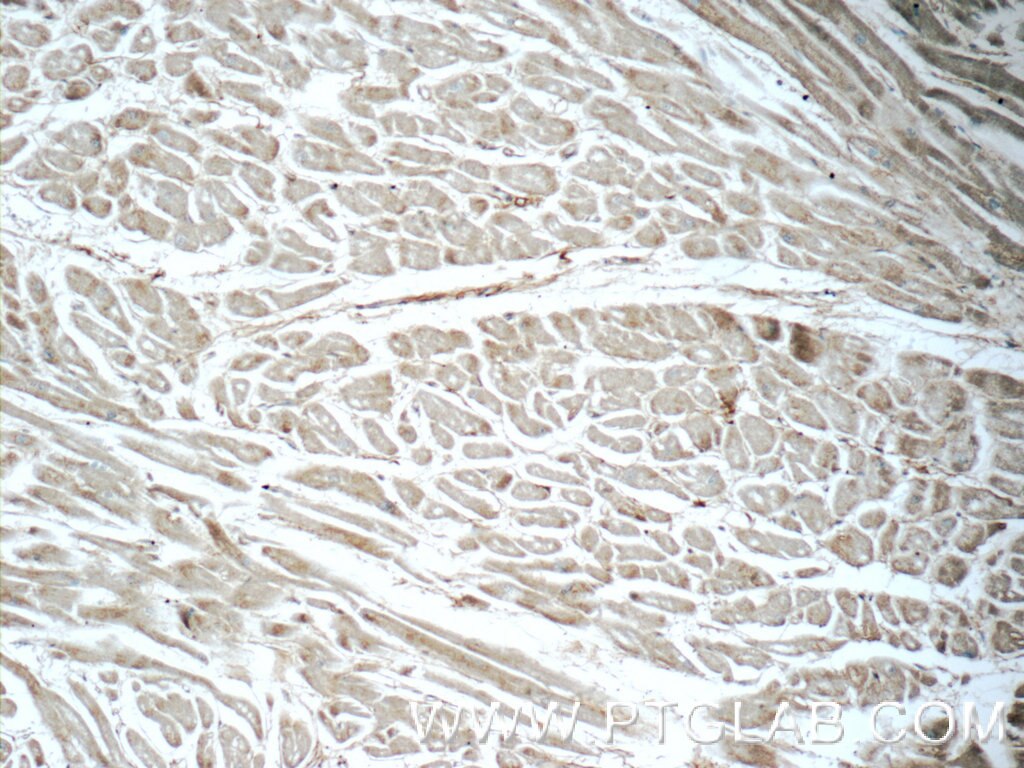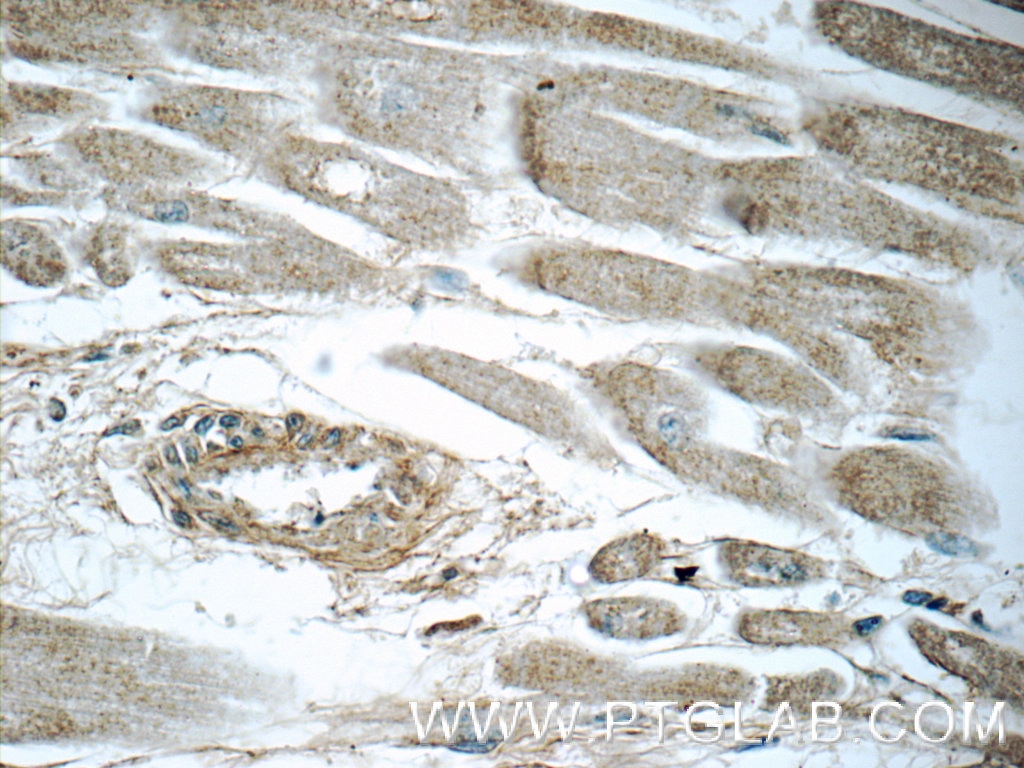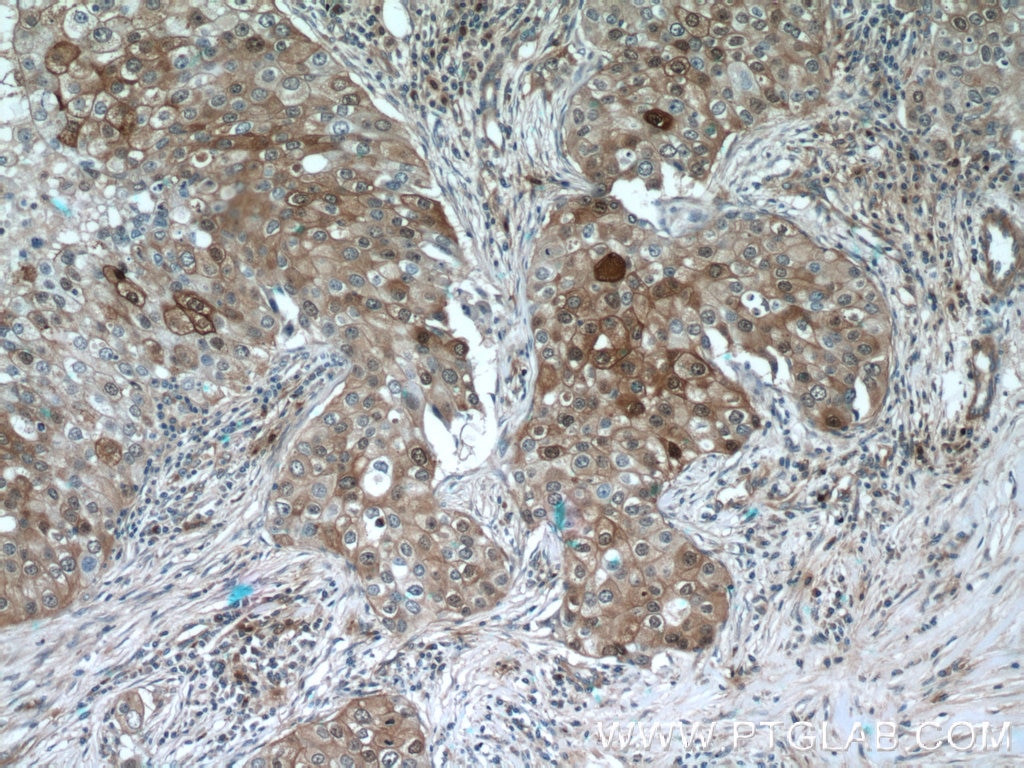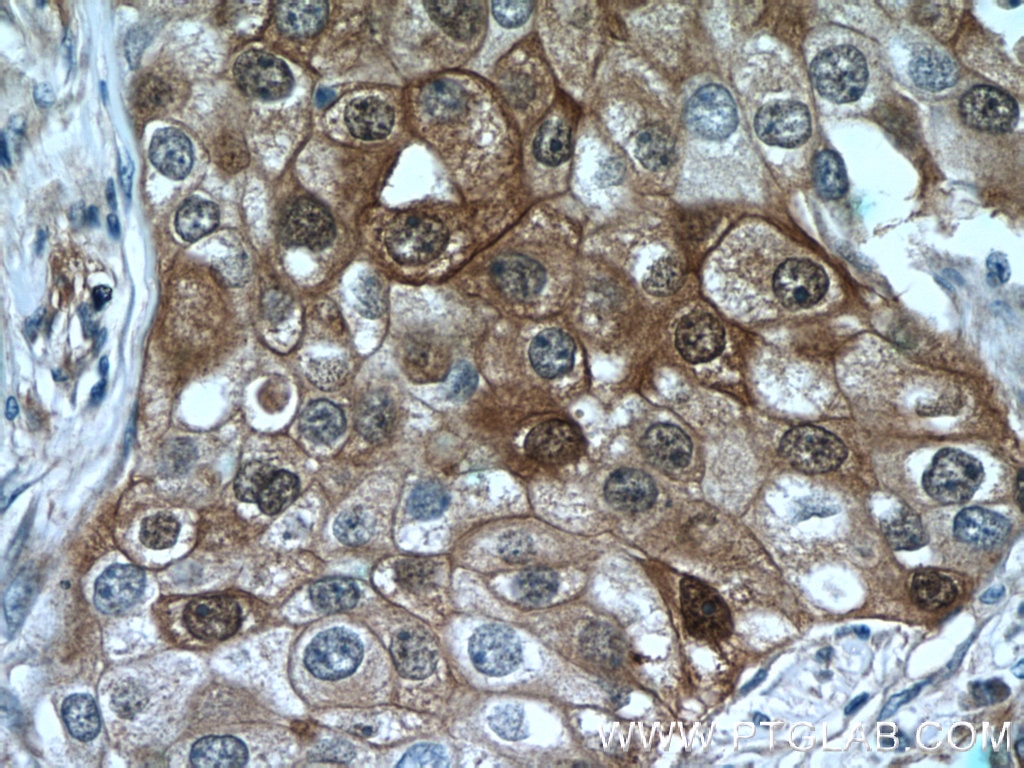Validation Data Gallery
Tested Applications
| Positive IHC detected in | human heart tissue, human breast cancer tissue Note: suggested antigen retrieval with TE buffer pH 9.0; (*) Alternatively, antigen retrieval may be performed with citrate buffer pH 6.0 |
Recommended dilution
| Application | Dilution |
|---|---|
| Immunohistochemistry (IHC) | IHC : 1:20-1:200 |
| It is recommended that this reagent should be titrated in each testing system to obtain optimal results. | |
| Sample-dependent, Check data in validation data gallery. | |
Product Information
55137-1-AP targets LTB4R in IHC, ELISA applications and shows reactivity with human samples.
| Tested Reactivity | human |
| Host / Isotype | Rabbit / IgG |
| Class | Polyclonal |
| Type | Antibody |
| Immunogen | Peptide 相同性解析による交差性が予測される生物種 |
| Full Name | leukotriene B4 receptor |
| Calculated molecular weight | 38 kDa |
| GenBank accession number | NM_181657 |
| Gene Symbol | LTB4R |
| Gene ID (NCBI) | 1241 |
| RRID | AB_2881275 |
| Conjugate | Unconjugated |
| Form | Liquid |
| Purification Method | Antigen affinity purification |
| UNIPROT ID | Q15722 |
| Storage Buffer | PBS with 0.02% sodium azide and 50% glycerol , pH 7.3 |
| Storage Conditions | Store at -20°C. Aliquoting is unnecessary for -20oC storage. |
Background Information
Leukotriene B4 receptor 1 (LTB4R, also know as LTB4R1 or BLTR) is a G-protein coupled receptor for leukotriene B4, a potent chemoattractant that is primarily involved in inflammation, immune responses and host defence against infection (PMID: 9177352). LTB4R is highly expressed in human leukocytes and is involved in the regulation of the inflammatory system.
Protocols
| Product Specific Protocols | |
|---|---|
| IHC protocol for LTB4R antibody 55137-1-AP | Download protocol |
| Standard Protocols | |
|---|---|
| Click here to view our Standard Protocols |



